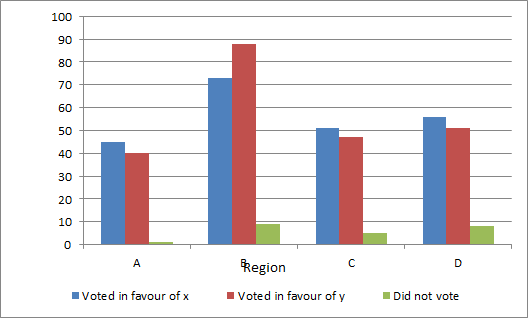1.
A constituency is divided in four regions A, B, C and D. Two candidates X & Y contested the last election from that constituency. The adjoining graph gives the break up of voting in the four regions. Study the graph and answer the following questions.
 Approximately how much percent of voters voted in favour of X?
Approximately how much percent of voters voted in favour of X?
Show Similar Question And Answers
 Discipline Wise Break up of Number of candidates selected after Interview by organisation
Total Number of Candidates selected After
Interview=7390 percentage
Discipline Wise Break up of Number of candidates selected after Interview by organisation
Total Number of Candidates selected After
Interview=7390 percentage
 What was the ratio between the number of candidates appeared in interview from other disciplines and number of candidates selected from Engineering discipline respectively
What was the ratio between the number of candidates appeared in interview from other disciplines and number of candidates selected from Engineering discipline respectively Powered By:Omega Web Solutions
Powered By:Omega Web Solutions